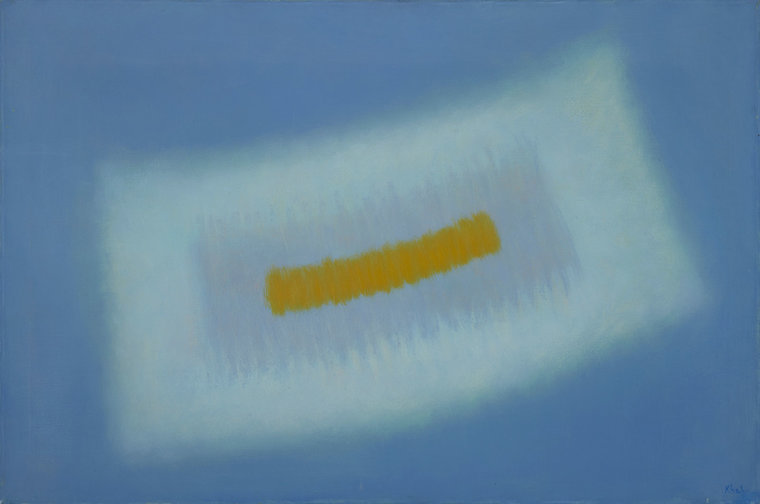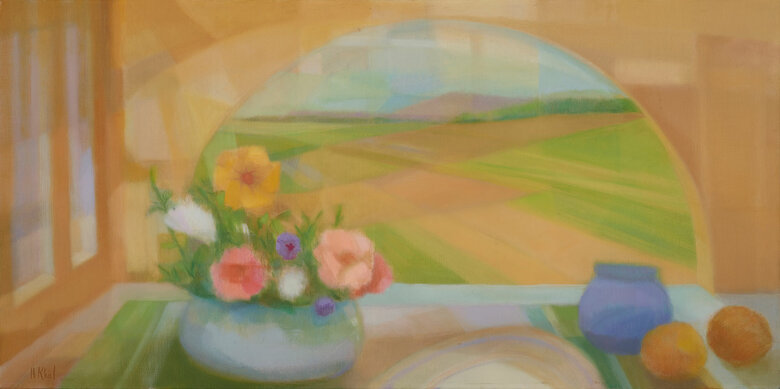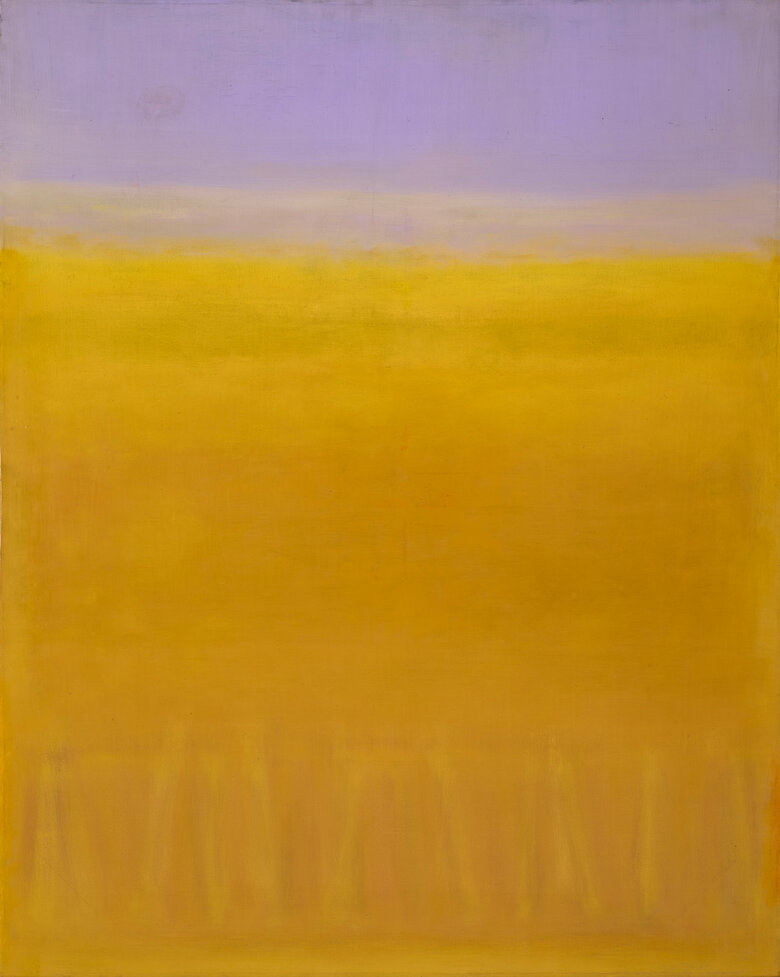Lebanese artist Helen Khal’s Abstract Composition, 1991, is a striking exploration of color and form, embodying the artist’s lifelong fascination with light and its emotive power. It features a small yellow rectangle enclosed within another large white cloud-like one floating against a sky-blue background. Drawing from Rothko's color-field painting techniques, Khal softens the edges of her forms, allowing one color to fuse into the other. Khal’s work was deeply rooted in the luminosity of the Lebanese landscape. Her connection to ‘place’, particularly Lebanon, is evident here, where the soft blues and glowing yellows create a warmth reminiscent of the Mediterranean light.
Throughout her career, Khal viewed color as a primary means of expression as she sought to explore its emotional depth and ability to create immersive visual experiences. This work is a culmination of Khal’s artistic philosophy, her role as an educator, and her pioneering contributions to modern art in Lebanon.
Khal’s impact on Lebanese modernism extended far beyond her own canvases. In 1963, she co-founded Lebanon’s first commercial art gallery, Gallery One, alongside her then-husband, the poet Yusuf al-Khal. This was a significant moment for contemporary Lebanese art, as the gallery provided an essential space for emerging modernist artists. More than a gallery, it became a hub for intellectual and artistic exchange, hosting literary salons that brought together artists, poets, and critics.
Beyond her work as a curator, Khal was a highly respected art critic, writing for The Daily Star and Monday Morning, where she shaped discourse on modern Lebanese art. She was particularly interested in highlighting the work of women artists, recognizing their contributions in a field that often marginalized them. In 1987, she published The Woman Artist in Lebanon, a study that documented the experiences of female artists and the challenges they faced in balancing artistic careers with societal expectations. Through her work as a curator and a critic, Khal played a key role in defining a Lebanese modernist aesthetic that was in dialogue with international movements while remaining deeply tied to regional identity.
Khal’s impact as an educator was equally significant. She taught at the American University of Beirut (AUB) from 1967 to 1976, as well as at the Lebanese American University (LAU), where she mentored many young artists, including Huguette Caland and Afaf Zurayk. Her role as an educator was deeply tied to her pioneering efforts, and she played a fundamental role in defining the Lebanese art scene. Khal’s work as a painter, educator, advocate, critic, and curator left a lasting impact, ensuring that Lebanese modernists, particularly women, were not erased from artistic narratives.
Signed in English front lower left.








